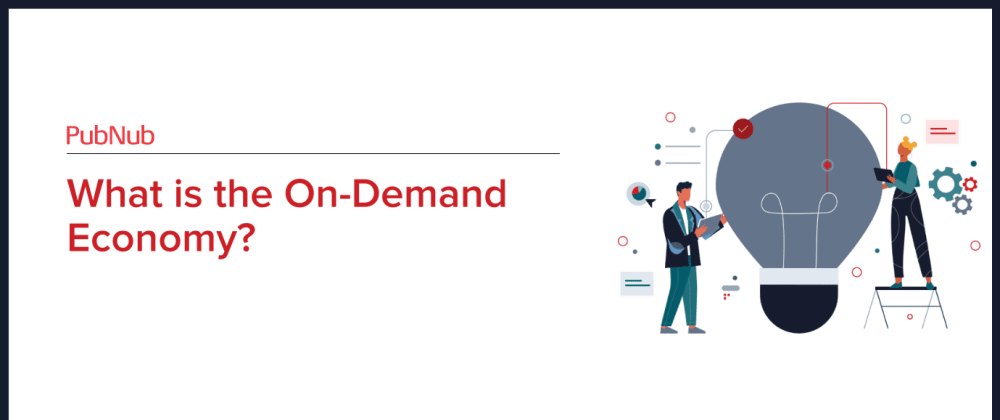What is the On-Demand Economy?
The term on-demand economy often intertwines with the gig economy, shared economy, crowdsourcing, or phrases like it’s like Uber, but for X. However, the on-demand economy is a broader term that encompasses these elements. While these terms depict the service's nature or who is providing it, the on-demand economy includes it all.
On-Demand Services and Companies Creating a New Type of Economy
The on-demand economy is a business model that lets users request a physical object, data, or service to be fulfilled instantly, embodying the concept of instant gratification. This psychological feeling consumers receive when they can make a transaction instantly and possibly track its fulfillment is the cornerstone of the on-demand economy. In essence, you desire something, you want it now, and the on-demand economy delivers it.
Sharing Economy vs. On-Demand Economy vs. Crowdsourced (Gig) Economy
The sharing economy is often built on the concepts of the on-demand economy, but not vice-versa. In the sharing economy, resources are shared. For example, if I’m not using my garage, my bicycle, my golf clubs, or my cabin in the woods, someone can rent it. Airbnb, GetAround, RentTheRunway, and Lending Club are all examples of the sharing economy. The crowdsourced economy, on the other hand, is more about labor than resources.
The crowdsourced economy leverages the talents, skills, and tangible resources of a group of people to deliver a service or product. Often used interchangeably with the gig economy, the crowdsourced economy is driven by a large number of independent workers in temporary positions, who can work as little or as much as they wish. Uber, Upwork, Instacart, and TaskRabbit are all examples of the crowdsourced economy.
These companies are built as on-demand businesses, where users can easily and quickly request a service, a product, anything, and it’s managed from start to finish by the on-demand business. Ease of use, real-time alerts and notifications, and security and compliance are paramount in the on-demand economy, to deliver the instant gratification that users not only require but crave.
And remember, just because it’s on-demand, doesn’t mean it’s shared or crowdsourced.
Core Tenets of the On-Demand Economy
On-Demand Services Should Provide an Instantaneous Experience
In the on-demand economy, waiting is not an option. Whether you’re calling a car or ordering a meal, you want confirmations, status updates, live maps, and the product or service itself as swiftly as possible. The instantaneous experience is essential – so on-demand services need to have a tight, reliable real-time computing layer. It needs to be fast, lightweight, available in unreliable environments, and in most cases, mobile-first.
On-Demand Economy Requires a Connected Shared Experience
As we previously covered in our explanation of the crowdsourced economy, many on-demand services involve more than one human. As a result, the entire transaction experience is a connected shared experience, with one person requesting the good or service, and another person or people fulfilling it. Everyone needs to be synchronized in their instantaneous experience.
When a person does one thing, it needs to be reflected across every other connected user as it happens. Whether it’s a chat message with an update or monitoring location on a live map, that connected shared experience is what drives user satisfaction and the service's success.
On-Demand Services Need Mobile Functionality and Readiness
There’s a high likelihood that someone involved in an on-demand transaction will use a mobile device in some form. That means that mobile needs to be a primary consideration for any on-demand business. With people and services constantly in motion, ensuring a reliable experience on the go is a must. It’s not just about the fulfillment of the service or product, but all the updates that come in between that provide the connected shared experience users love.
Looking to the Future of the On-Demand Economy
The on-demand experience will continue to grow as a defining value for businesses, products, and apps across every industry. People now expect to get something, whether it's updates or the service itself, in near real-time. Therefore, on-demand features will differentiate industry leaders and define new disruptors establishing new ways of delivering goods and services.
The COVID-19 pandemic has accelerated the growth of the on-demand economy, and advancements in AI, machine learning, and automation are shaping its future.
For more information about how PubNub can help you launch or enhance your on-demand app, schedule a demo today. You'll get a walk-through of PubNub's latest features and capabilities, including the impacts of recent advancements like 5G technology on service delivery.
How can PubNub help you?
This article was originally published on PubNub.com
Our platform helps developers build, deliver, and manage real-time interactivity for web apps, mobile apps, and IoT devices.
The foundation of our platform is the industry's largest and most scalable real-time edge messaging network. With over 15 points-of-presence worldwide supporting 800 million monthly active users, and 99.999% reliability, you'll never have to worry about outages, concurrency limits, or any latency issues caused by traffic spikes.
Experience PubNub
Check out Live Tour to understand the essential concepts behind every PubNub-powered app in less than 5 minutes
Get Setup
Sign up for a PubNub account for immediate access to PubNub keys for free
Get Started
The PubNub docs will get you up and running, regardless of your use case or SDK



















